After arriving in Hilo just at sunset, renting a car and settling in, it was time to go out and explore with the audio recorder. I discovered the sound that has become a bane for Hilo: an invading frog, the coqui. A little frog, native of Puerto Rico, this invader probably hitchhiked on imported plants. There are no native amphibians in Hawaii. Lacking predators the Coqui population has bloomed and spread.
Why a bane for Hilo residents? Each evening the males sing their little hearts out, hoping to score a girl frog. One or two males calling might be cute. But, when you have dozens and dozens, they require you to close your windows if you want to hear the TV (did I mention they are loud?). Check the recording and imagine all the trees and shrubs around your house with these happy singers croaking away. The frog’s name, “coqui,” is onomatopoeic, sounding like their call. So far, they are mostly on the Hilo, the wetter, side of Hawaii. But I heard a lone male in Kona, the dry side—probably also arrived on a plant.
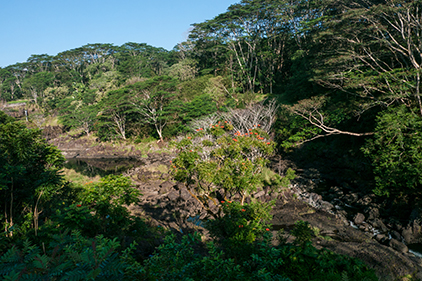
Typical vegetation on the wet side of Hawaii.
An unknown number of coquis singing in a tree near the ocean shore in Hilo.
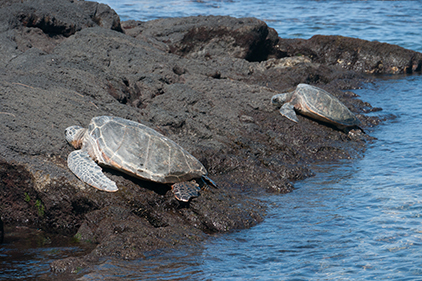
Sea turtles warming themselves at Richardson Ocean Park, near Hilo.
The first full day in Hawaii was taken up by an eight hour long bus tour in a 20-passenger bus (to help get an overview of the Hilo side of the Big Island) that visited sea turtles sunning themselves at Richardson Ocean Park near Hilo, Hawaiian fish ponds (that have been used for rearing food fish for generations) with people tending the ponds, Rainbow Falls uphill from Hilo with water falling over a lava cliff, and old and not-so-old lava flows in Hawaii Volcano National Park (pahoehoe lava can make some beautiful “rock art”), and it ended with twilight viewing of the Kīlauea volcano from the Jaggar Museum. Harvey, the driver/tour guide and a native Hawaiian, talked pretty much non-stop for eight hours, regaling us with facts, stories, legends, and maybe a few, let’s say, exaggerations.
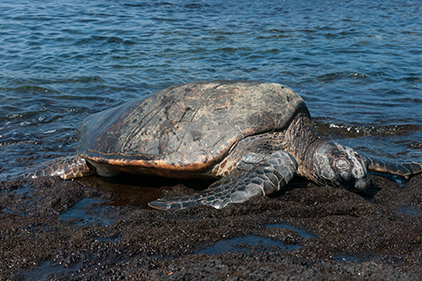
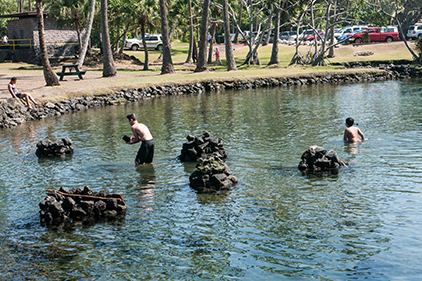
Native Hawaiians have long cultivated fish in coastal ponds. These ponds by Richardson Ocean Park are still in use. The rock mounds are to provide some shade for the fish.
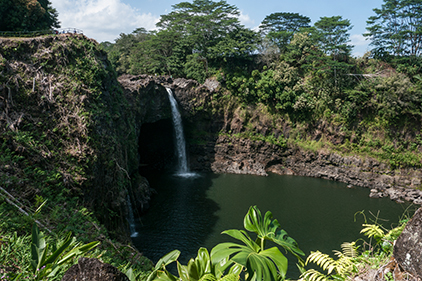
Rainbow Falls. This waterfall gets its name from the morning rainbows sometimes visible in the early morning sun. But even though February is the rainy season in Hilo, it was a dry rainy season, so far, so water over the Falls was low. No rainbow, today.
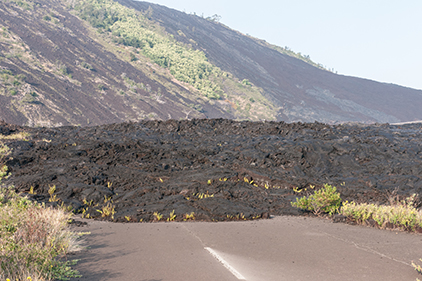
This lava flow dates from 1972. The road has been rerouted and rebuilt more than once, since then.
At right are some images from the Thurston Lava Tube, in Hawaii Volcanoes National Park. This is a VERY popular tourist spot—a lava tube with easy access.
The fluid lava of Hawaii can create tunnels with a hardened roof and sides. When the source of lava goes dry, the tunnel may drain, leaving what are called Lava Tubes. This one is large, though they can be much smaller. Access usually is when part of the roof caves in.
On the mainland of the United States one can also see lava tubes, and hike inside them, at Lava Beds National Monument in Modoc County, California.
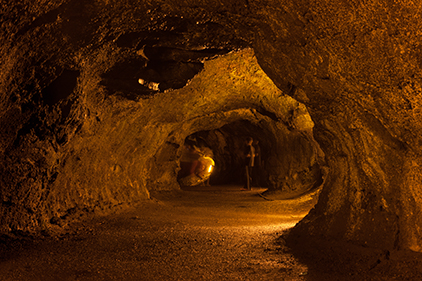
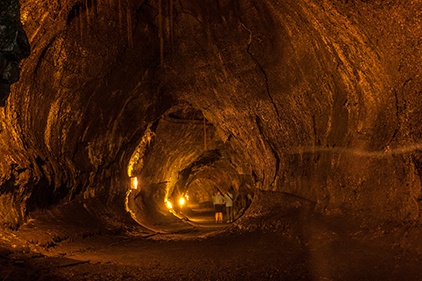
Since this visit to Hawaii was about volcanoes, for me, the views of the glowing lava lake in Halemaʻumaʻu reflecting off of the fume cloud emanating from the lava lake was a definite hit this night. Kīlauea has been active for over thirty years and has been threatening the town of Pahoa with a lava flow (currently stalled) for months. I would have stayed much longer at the Kīlauea caldera overlook, but most people on the bus tour had to get to the airport to fly back to Honolulu—on the Big Island for half a day.
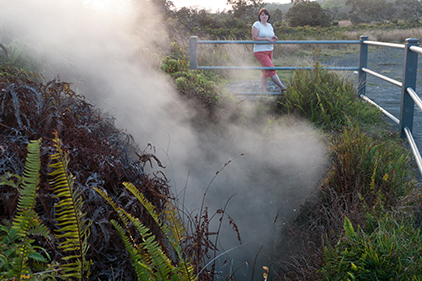
There are numerous steam vents on the north rim of the Kīlauea caldera. Most are just groundwater turned to steam. A few have a very faint rotten-egg odor.
I have no idea if these insects, recorded in Hilo, are native or accidental imports. I suspect the latter. The center frequency of the loud, continuous-sounding chirping is 6 kHz.
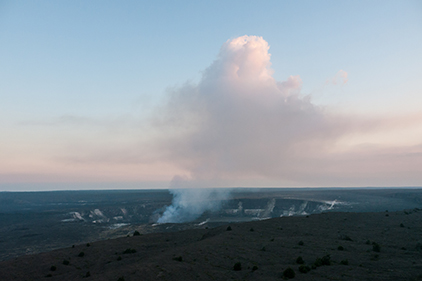
The Kīlauea caldera is about 3 by 4 miles. Inside it, on the far edge of the Caldera from the Jaggar Museum where I was located, is the Halemaʻumaʻu crater. Inside Halemaʻumaʻu is a smaller-still crater with a lava lake. This lake appeared a couple years ago as part of the nearly continuous eruptions of the Kīlauea volcano system. The glowing lava lake reflects off of the crater walls and fumes.
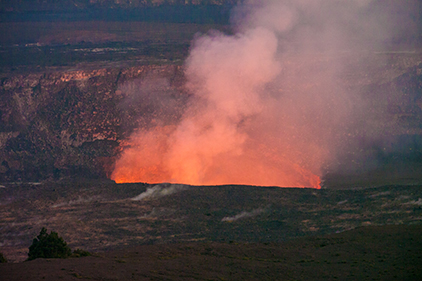
A telephoto view of the lava lake glow reflecting off of the fume clouds in the Halemaʻumaʻu Crater